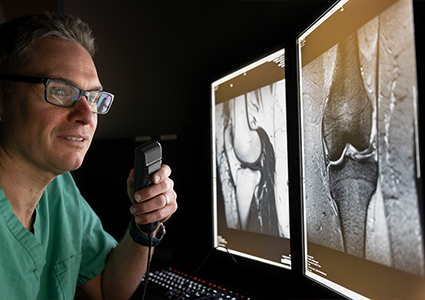
Total Hip and Knee Replacement Program
Baptist Health Hardin Total Hip and Knee Replacement Program provides patient-centered care designed to help patients meet their lifestyle goals. The multidisciplinary team works closely with each patient to determine the appropriate treatments for hip and knee relief so they can get back to doing what they love.
Hip and Knee replacement patients encounter more than 60 Baptist Health Hardin team members who support them on the continuum of care, from consultation and education to surgery and inpatient care to outpatient therapy.
Program Distinctions:
- 1st in Kentucky to earn Joint Commission’s Advanced Total Hip and Total Knee Replacement Certification
- Kentucky’s lowest 30-day readmission rate – 3.2% – according to the Centers for Medicare and Medicaid Services (CMS)
- 12th lowest readmission rate in the US according to Becker’s Hospital Review
Know Your Risk
Choose an assessment and location before you begin.
Knee and Hip Joint Pain
Wondering what your knee and hip pain means? Or what you can do to alleviate that pain? Take this knee and hip assessment to find out how well your joints are functioning and how joint pain affects your quality of life.
